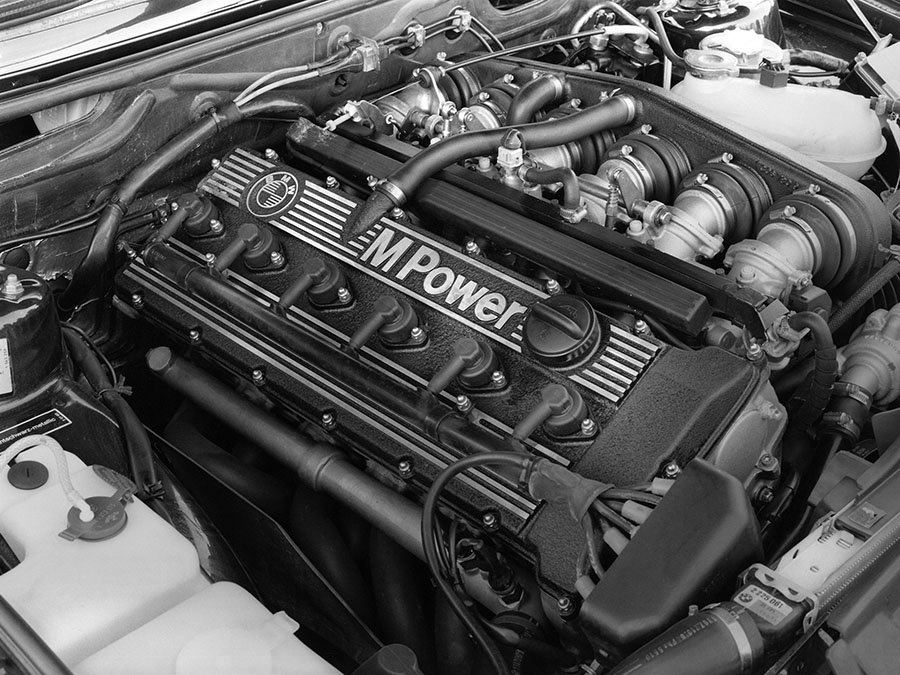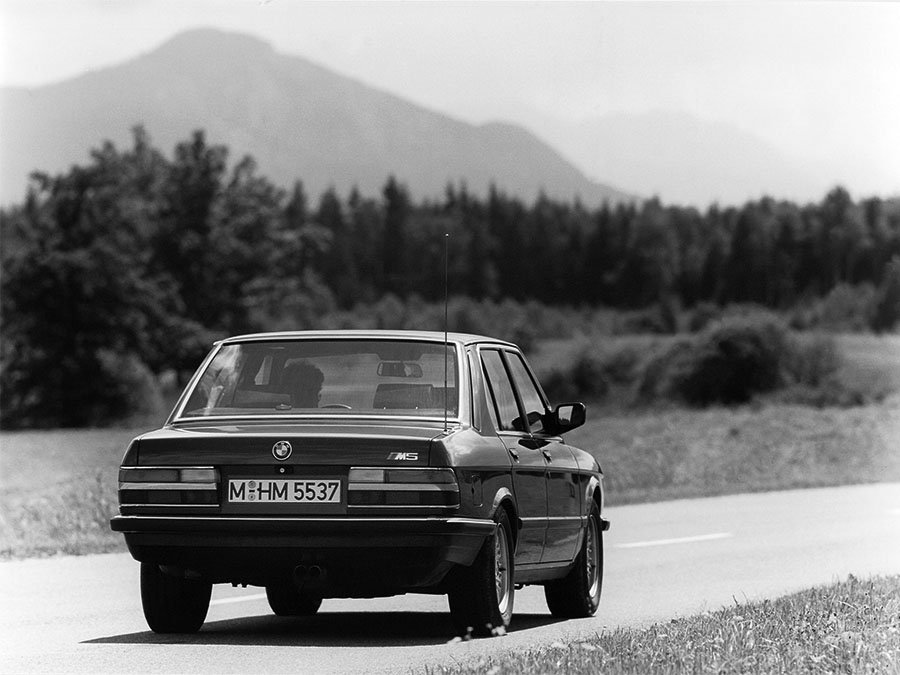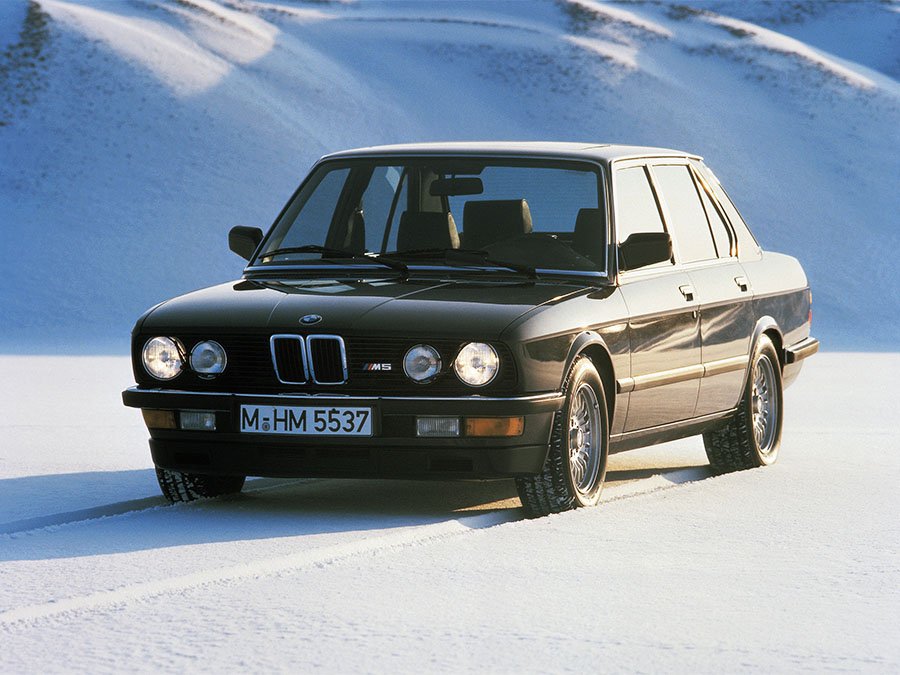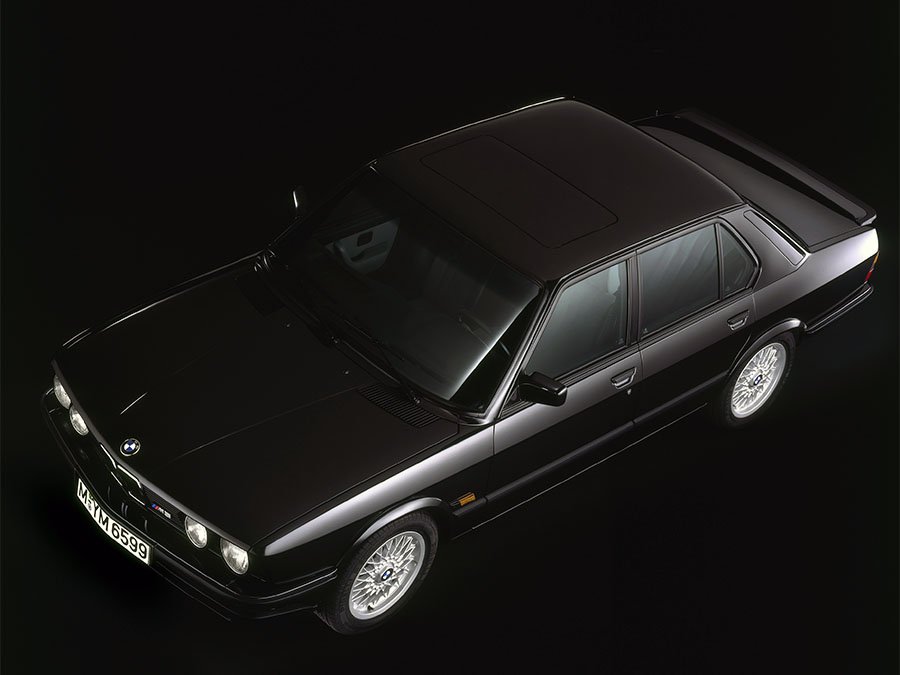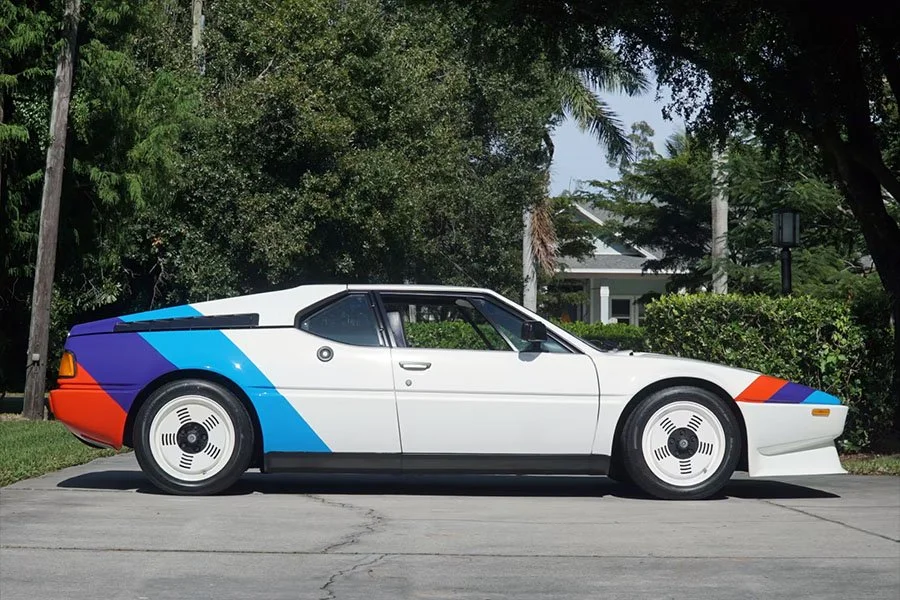Guide: BMW E28 M5 - a Historical & Technical Appraisal
/BACKGROUND
BMW launched the original E12 5-series in 1972. It formed the basis for a new model line up that would ultimately include the entry level E21 3-series (from 1975), the handsome E24 6-series Coupe (from 1976) and the flagship E23 7-series Saloon (from 1977).
After the iconic E9 3.0 CSL and E20 2002 Turbo were discontinued, for several years the E12 5-series was the only model available in BMW Motorsport trim. However, these enhanced Saloons were not widely promoted; between 1974 and 1979, only around 900 were built, most of which were sold in Germany.
Nevertheless, these sales (along with the commercial success of the South Africa-only 530 Motorsport Limited Edition) finally convinced BMW to launch an official Motorsport 5-series at the Frankfurt Motor Show in 1979. 1410 examples of the resultant M535i were sold in little over a year along with another bunch built up in Rosslyn for the South African market.
For the 1982 model year, the ageing E12 5-series was replaced by the new E28 variant. In many ways the two variants were broadly similar, but the E28’s styling was updated and its equipment level improved.
The E28 was initially available with a variety of inline four and six cylinder engines. Most powerful of these was the 182bhp 528i, but for the 1985 model year, a highly anticipated M5 was launched.
The M5 was publicly unveiled at the Amsterdam Motor Show in January 1985. By this time, production had already been underway for three months.
The M5 came with the normal array of BMW Motorsport chassis, engine and gearbox enhancements. It was arguably the most discrete M-badged creation thus far thanks to an almost standard looking exterior.
Production initially took place on a dedicated assembly line at BMW’s Preussenstrasse facility in Munich.
CHASSIS
Each M5 was based on a pressed steel E28 bodyshell with its 2625mm wheelbase. Like the M635 CSi (launched in September 1983), for reasons of weight distribution the M5’s battery was mounted to a special compartment in the trunk as opposed to up against the front bulkhead.
Like every E28, the M5 used an independent suspension layout with MacPherson struts at the front and semi-trailing arms at the rear.
Inevitably the M5 incorporated an array of geometry changes. Up front it used the same gas-filled Bilstein shocks as the M635 CSi with standard E28 springs and a 21mm diameter anti-roll bar. At the back it ran standard E28 Bilstein shocks and springs with a 14mm anti-roll bar.
The brake system was lifted direct from the M635 CSi. It comprised 300mm diameter ventilated discs at the front with beefier four-piston calipers. Solid 284mm discs were used at the rear with bigger than standard caliper pistons.
Likewise, the M5 used the same wheels that were fitted to the E24 and E23 range. These forged alloy cross-spoke metric-sized wheels were designed for Michelin’s TRX tyres and measured 390mm x 165mm (about 15.4 x 6.5-inches).
A regular 70-litre fuel tank was installed in the trunk floor alongside the spare wheel.
ENGINE / TRANSMISSION
Underneath the M5’s hood was the same Type M88/3 engine that had been created for the M635 CSi.
Unlike the rest of the E24 and E28 line up (which used single overhead camshaft straight six engines with two valves per cylinder), the M88/3 was a twin cam 24 valve power unit derived from the fabled M1.
The M88/3 differed from the M1 lump on account of its wet-sump lubrication system, new pistons and connecting rods and updated second generation Bosch Motronic digital engine management which controlled the spark timing and the electronic injectors with far greater precision. This in turn allowed the compression ratio to be hiked from 9.0:1 to 10.5:1.
Like the M1 engine, the M88/3 motor featured a crossflow cylinder head, a specially tuned intake system with six individual throttle bodies and an artistically crafted bundle of six intertwined exhaust manifolds.
It was immediately identifiable compared to regular 5-series engines thanks to an M Power script and BMW badge on the valve cover. Like all BMW 3.5-litre engines of this era, it featured a cast-iron block while the head was formed in light aluminium alloy.
Displacement was 3453cc thanks to a bore and stroke of 93.4mm and 84mm respectively.
Peak output was 282bhp at 6500rpm and 251lb-ft at 4500rpm.
In comparison, the M1 had pumped out 277bhp at 6500rpm and 239lb-ft at 5000rpm.
The regular 528i produced 182bhp at 5800rpm and 177lb-ft at 4200rpm.
Transmission was through a special close-ratio Getrag 280/5 five-speed manual gearbox, a single-plate hydraulic clutch and a limited-slip differential with 25% locking factor.
BODYWORK
Whereas previous BMW Motorsport iterations of the 5-series had been given subtle visual enhancements, the E28 M5 did not look much different to a basic 528i.
This was a deliberate ploy to give little indication of its performance, but did result in a rather plain looking machine.
Aside from M5 badges, the most obvious upgrade was a new front apron that incorporated a matt black plastic air dam designed to reduce high speed front end lift. The air dam also incorporated cooling intakes for the brakes and radiator.
Less easy to spot was a special engine undertray that smoothed airflow beneath the car.
Aside from body coloured mirror housings, the M5 was much like any other E28.
INTERIOR
In a similar fashion to the exterior, relatively few changes were made inside.
BMW Motorsport added a small diameter three-spoke M-Technic steering wheel, sport front seats and a gear knob with an M logo. The gear layout was displayed on a decal adhered to the ashtray lid.
Special instrumentation comprised a 280kmh / 170mph speedo together with an M-branded rev counter that lacked the usual economy meter. Small read outs for water temperature and fuel were stacked one above the other in the centre of the binnacle with an array of warning lights in between and at the base.
Housed on the inside corner of the instrument binnacle was the onboard computer that was able to display a variety of readings. The audio system was located in a separate central binnacle above the ventilation controls.
Like most German cars of this era, the M5 came with a fairly basic list of standard equipment despite its high price. In addition to fabric upholstery, each M5 left the factory with electric mirrors, central locking, an onboard vehicle monitoring system and an entry level audio system.
The trunk was lined with plush black velour instead of standard grey carpet.
OPTIONS
Customers could enhance their cars with a wide choice of optional extras to include metallic paint, headlight wash / wipe and deletion of the M5 badges. Interior upgrades included Recaro front seats, leather upholstery, air-conditioning, cruise control, electric windows, electric front comfort seats, heated front seats, an electric sunroof, a rear sunblind, rear head rests, velour floor mats and a choice of more epensive audio systems.
As the M5 was finished by hand on a dedicated assembly line, customers could also request specially coloured interiors with hand-stitched leather.
WEIGHT / PERFORMANCE
The E28 M5 weighed in at 1430kg.
It had a top speed of 152mph and 0-62mph time of 6.3 seconds which made it easily the fastest car in its admittedly very small class.
PRODUCTION CHANGES
M5 production started in October 1984 at which point the car was only available in left-hand drive European specification.
To address customer requests for a visually more exciting machine, BMW added an M-Technic body kit to the options list in September 1985. The M-Technic body kit comprised a deep front spoiler with matching side skirts and rear apron. A spoiler was also added to the boot lid. All this additional equipment, along with the bumpers, was painted body colour.
Another new option added to the list of cost upgrades in September 1985 was electric sports seats.
In November 1985, a BMW sound system and driver airbag were added to the options list.
From February 1986, the M5 came with new rear springs that were different to the rest of the E28 range.
Production of the right-hand drive M5 began in March 1986. As standard, these cars came with larger 7 x 16-inch cross-spoke wheels that became an option in other markets. M5s equipped with the 7 x 16-inch cross spoke wheels featured body coloured wheelarch extensions. Right-hand drive cars also came with the M-Technic rear spoiler as standard plus M tri-colour tags on all four seats.
At the same time as right-hand drive production began, BMW switched the M5 to a gear knob that incorporated both an M logo and the shift layout (prior to this the shift layout had been displayed on a decal attached to the ashtray lid).
In April 1986, electric windows and the onboard computer were added to the list of standard equipment. At the same time, a new Shadowline option was introduced that saw nearly all the exterior brightwork (except for a couple of items like the kidney grilles) switched to an anodised black finish.
In September 1986, M5 production was switched from Preussenstrasse to BMW Motorsport’s new facility at Garching.
In October 1986, door sill plates with an M5 logo were added and Boge shocks replaced the original Bilstein units. At the same time, thicker anti-roll bars were installed. They went from 21mm to 25mm at the front and from 14mm to 18mm at the rear.
The final update arrived in March 1987 when map lights were added to the rear view mirror.
NORTH AMERICAN / JAPANESE VERSION
BMW started production of a North American-spec. M5 in November 1986. A limited run of 500 cars was announced but over 1200 were actually built which resulted in owners filing a class action law suit against the manufacturer. BMW settled the suit by giving each purchaser a transferable $4000 credit against any new BMW.
The North American M5 came with BMW’s catalysed S88 engine which featured a simplified exhaust manifold, a duplex timing chain, 248° instead of 264° camshafts, a lower 9.8:1 compression ratio and a BMW M Power valve cover script but no BMW roundel. Peak output was 256bhp at 6500rpm and 243lb-ft at 4500rpm. These cars also ran a different final drive ratio (3.91:1 instead of 3.73:1).
Although it came with the thicker 25mm and 18mm front / rear anti-roll bars introduced to the rest of the M5 range in October 1986 (plus the unique M5 rear springs added in February ‘86), the North American M5 incorporated standard E28 suspension and a self-levelling rear axle.
The 7 x 16 cross-spoke wheels and body coloured wheelarch extensions were standard.
In order to comply with safety regulations, the normal M5’s larger outer headlights were switched to the smaller inboard size which meant all four front lights were the same size. The lights were also switched to sealed beam units.
Other concessions to North American safety regulations included the addition of bulky 5mph impact-absorbing bumpers and additional side marker lights.
Each car came with a special front apron, an M-Technic rear spoiler and Shadowline exterior trim.
Only two colour schemes were offered: Black with Black leather or Black with Natural leather.
Each car was built to a very high standard specification to include air conditioning, electric seats, an electric sunroof, cruise control, the BMW Sound System, M tri-colour seat tags and extended leather which covered the seats, centre console and glovebox.
The Japanese market M5 was identical to the North American version with the exception of it lacking the 5mph impact-absorbing bumpers and side marker lights. Only one colour scheme was offered in Japan: Diamond Black with Anthracite leather. Production began in January 1987.
SOUTH AFRICAN VERSION
From June 1987, BMW’s Rosslyn plant in South Africa started assembly of Complete Knock Down kits (CKD) that were sent over from Germany.
These cars came with the 282bhp M88/3 non-catalysed engine, 7 x 16-inch cross spoke alloy wheels (without wheelarch extensions), M-Technic body kit and Shadowline trim.
They were offered in five exterior colours: Henna Red, Ice White, Cirrus Blue Metallic, Dolphin Grey Metallic and Diamond Black Metallic.
Interiors were upholstered with unique Highline Nappa leather of the type used in 6 and 7-series models. This covered the seats, door panels, centre console, dash, glovebox lid, headliner and sun visors. M tri-colour labels were fitted to the seats.
South African variants were never offered with the optional headlight wash / wipe upgrade and M5-branded sill plates were fitted to the front door jams only.
END OF PRODUCTION
BMW stopped M5 production in Germany in November 1987. Assembly of South African derivatives from CKD kits continued until November 1988.
Production figures were as follows:
LHD Euro market with no cat (10/84 to 09/87) 588 units
RHD Euro market with no cat (03/86 to 11/87) 187 units
LHD North American market with cat (11/86 to 11/87) 1340 units
LHD Japanese market with cat (01/87 to 03/87) 30 units
RHD South African market with no cat (06/87 to 11/88) 96 units
The E28 range was replaced for the 1989 model year by the E34 5 series.
An E34 M5 was launched at the Frankfurt Motor Show in September 1988 and offered from the start of production.
Text copyright: Supercar Nostalgia
Photo copyright: BMW - https://www.bmw.com


